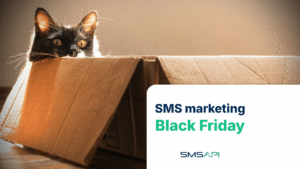
Table of Contents
Mobile marketing utilizing bulk SMS is a very efficient method of reaching a wide range of consumers as well as relationship building. There are certain rules you should abide by though. Following them results not only in increased conversions but also help you to refine your target groups.
What it means is designing a mobile campaign in a way in which it will constitute value to its receivers. Fulfill their needs and meet interests. At all costs avoid sending random irrelevant messages offering products and services. Those are the basic, below you’ll find the core rules that you must follow when using SMS marketing. Let’s get started!
1. Gain the consent and acceptance of the receiver
SMS advertising must be aimed solely at those consumers who have unambiguously and consciously expressed their will to participate in an SMS campaign. Moreover, even if you get the consumers’ permission to send advertising content, you need to leave the option to withdraw the consent, as well as the option to update their personal data, open at all times.
How to get a consent for SMS marketing?
- Create databases dedicated to particular brands.
- Draw up a direct inquiry for consent to process personal data, along with a request to select the confirmative option.
- Provide unambiguous information as to where and how can someone unsubscribe from the list.
- Check if your actions are GDPR compliant.
Texting consumers who have not agreed to receive messages will have a negative impact on a brand’s image, and also result in legal consequences!
Permission marketing is the privilege (not the right) of delivering anticipated, personal and relevant messages to people who actually want to get them. It recognizes the new power of the best consumers to ignore marketing. It realizes that treating people with respect is the best way to earn their attention.
Seth Godin
Read more
2. Adjust the message to the consumer’s profile
I guess you all know content marketing, it assumes that through valuable content you can gather engaged and loyal customers. What is more, if you provide your recipient with useful information, he will much more likely process the message and react. SMS personalization means not only using name parameters that can be automatically inserted into SMS but also other data like age, shoe size, tracking number, address, referral code, etc.
Providing receivers with interesting content spurs involvement. It allows you to reduce the number of people unsatisfied with receiving such a message to a minimum. Targeting, i.e. adjusting information to a receiver’s profile is one of the basic factors which directly influence both – the campaign’s efficiency and the longterm relation-building.
How to personalize SMS content?
- Collect the requiered information at the database building stage.
- Personalize the SMS you send with name, place of residence, age, sex, interests and shopping preferences.
- Send information regarding events that may interest the receivers.
Sending non-personalized SMS which does not involve customers’ interests and needs may be treated as spam.
Read more
3. Pick the right time and frequency
SMS advertising can become a very effective tool of communication. If only used wisely! You can not make your recipient feel embattled and anxious because you send too muchh, too often, too early or too late… It is much more comfortable for both sides to avoid early mornings (before 8 p.m.) and late evenings (after 8 p.m.). Obviously, these are just the general rules and it depends on the occasion, SMS can be useful during the night events or motivate to run when the dawn is coming.
Before hitting the send button, ask yourself: what emotion would you feel when reading the message. Remember that SMS are delivered almost instantly, so take the timing and amount of messages sent into consideration. If the feelings align with your campaign idea, do send it!
Sending an advertising message early in the morning or late at night will surely have a negative impact on a brand’s image. The SMSAPI practice shows that the best solution is to send messages from Monday to Saturday, not earlier than 9 AM and no later than 8 PM. It, of course, differs from branch to branch.
How to pick a right time for SMS campaign?
- Ask clients at what time intervals would they prefer to receive the messages or depend on your knowledge about the target group.
- Inform your recipients about the frequency and the type of content they will be getting at the moment of signing up for the list.
- Measure and analyze the clients’ satisfaction with communication.
If SMS will be sent too often or at times not fitting a receiver, they will probably decide to stop receiving these messages at all.
4. Communicate openly
When receiving a message, one should instantly know who is the sender and what’s the purpose of it. An ad cannot deceive a receiver, suggest advantages which won’t be provided. In some countries false advertising is punishable, so be careful with your marketing claims.
This moment when your recipient receives your text is the most important one. You have to make sure he knows where does the message come from (sender name), what does the sender what (purpose), what is the information he wants to pass (content). Advertising can not cause misunderstanding, misinform or promise things you are not able to deliver.
How to communicate openly in SMS channel?
- Put the name of the company or institution or a slogan, which can be directly associated with your brand in the sender’s field.
- Thoroughly inform about the purpose of the message.
- Convey only information which is true.
The lack of information regarding the SMS sender can make the proper interpretation of the message difficult. Conveying information which is untrue (empty promise) will be remembered by the receiver as a scam.
5. Speak the language of benefits
Effective SMS is the one that brings on the particular actions of the customer. It can be shopping, click on the shortened link or passing, information or others. This message should be simple, clear and give an added value. Messy text, full of useless content can only cause the opposite effect. You should focus on the real value and go straight for what you expect.
It is best to design the message in such a way as to introduce to consumer direct benefits. After reading the message the receivers should feel that the offer is unique and aimed directly to them.
How to promote your offer with language of benefits?
- Draw attention to unique features, discounts, special offers, and extras instead of the product itself.
- Inform about the unavailability of the offer in other sales channels.
- Motivate – why is it that this particular offer has been directed at the receiver, e.g. loyalty program, participation in a contest.
An ad without added value (i.e. an extra, promotion, valuable data, etc.) is less effective than one that gives the recipients something in return for the attention.
Conclusions
The guidelines presented above should inspire you to conduct SMS marketing with privacy and the best interest of your customers in mind. At the same time, you shouldn’t resign from other communication channels – text messages work best when accompanied with for example e-mails or press publications.
A carefully prepared database is a cornerstone of an SMS campaign. Building your own contact database will allow you to know your customers better and to better adjust the communication to their expectations. Furthermore, you’ll be able to increase the efficiency of advertising activities. All the solutions supporting the proper running of SMS campaigns are available within the SMSAPI service, so go and profit!





